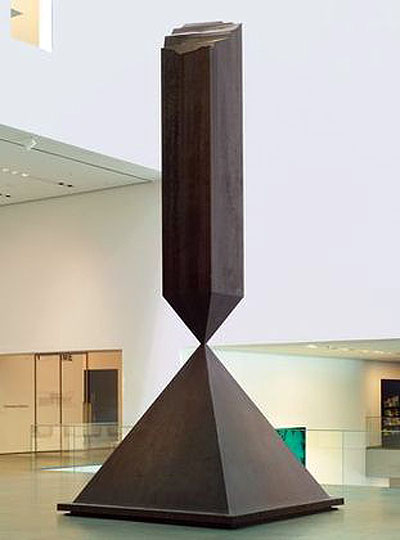BROKEN OBELISK
BROKEN OBELISK

Broken Obelisk -WikiArt
Barnett Newman’s Broken Obelisk, also known as Black Needle, was one of the best pieces of sculpture of its time. The dates associated with its creation reflect the fact that four versions of the sculpture were fabricated out of Corten steel and now reside at Rothko Chapel, Houston, Texas; Red Square, University of Washington, Seattle, Washington; Museum of Modern Art, New York, NY; and Storm King Art Center, New Windsor, NY.
The sculpture is significant to the theme of Diagonality because (1) its base harkens back to ancient Egypt, a place and a culture of great importance to the history of Diagonality, and (2) the whole work was created in the 1960s when Diagonality was again in its heyday during the 20th century.
In 1971, art critic Robert Hughes wrote about the work as follows: “Newman’s pursuit of the sublime lay less in nature than in culture. This enabled him to pick ancient, man-made forms and return them to pristine significance without a trace of piracy. One index of that ability was his sculpture. Broken Obelisk, perhaps the best American sculpture of its time, is Newman’s meditation on ancient Egypt: a steel pyramid, from whose apex an inverted obelisk rises like a beam of light. Here, Newman bypassed the Western associations of pyramids and broken columns with death, and produced a life-affirming image of transcendence. That unruffled self-sufficiency, beyond style, gave Newman’s work its mysterious didactic value. It is not ‘expressive’; the silence at the core bespeaks a man for whom art was a philosophical activity, a way of knowledge.”